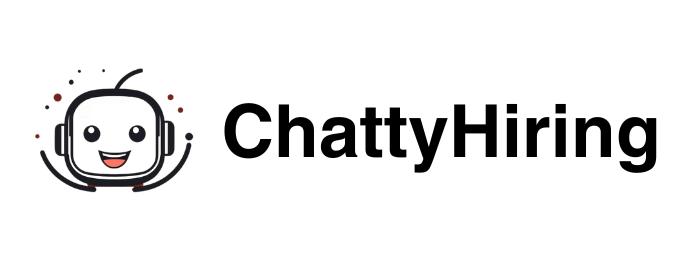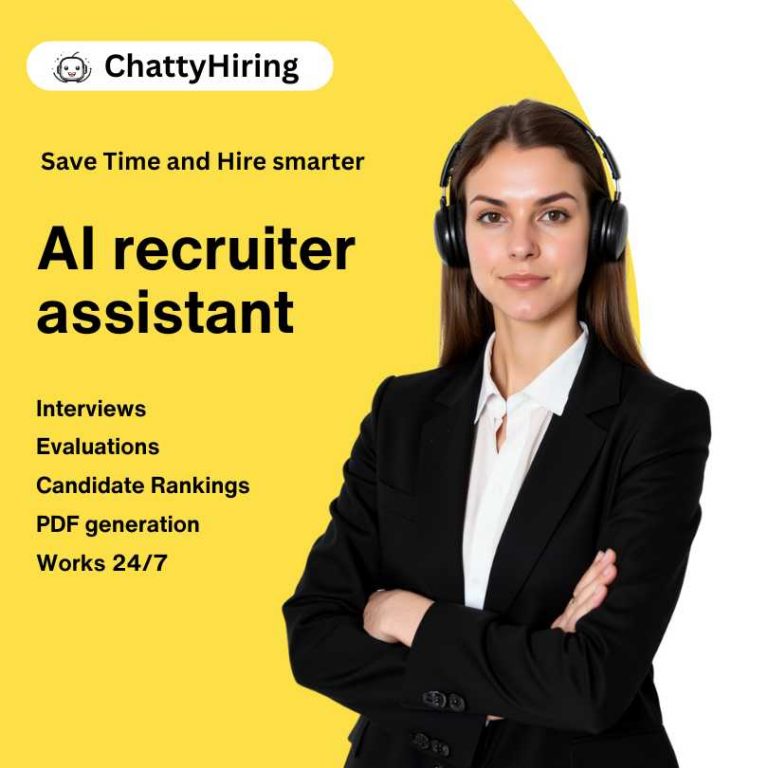The recruitment landscape has undergone significant transformations in recent years, driven by technological advancements, shifting workforce demographics, and evolving candidate expectations.
Organizations are now competing not just for skills and experience but also for the right cultural fit and alignment with their values.
The rise of remote work, accelerated by the global pandemic, has expanded the talent pool beyond geographical boundaries, allowing companies to tap into diverse skill sets from around the world.
This shift has made it imperative for HR professionals to adapt their strategies to attract and retain top talent in a highly competitive environment. Moreover, the current recruitment landscape is characterized by a growing emphasis on diversity, equity, and inclusion (DEI). Companies are increasingly recognizing the importance of building diverse teams that reflect the communities they serve.
This focus on DEI not only enhances innovation and creativity but also improves employee satisfaction and retention rates. As organizations strive to create inclusive workplaces, they must ensure that their recruitment processes are free from bias and that they actively seek out candidates from underrepresented groups. According to a report by Talent Culture, organizations that prioritize diversity in hiring are more likely to outperform their competitors in terms of profitability and productivity.
Key Takeaways
- The current recruitment landscape is highly competitive and requires a strategic approach to attract top talent.
- Identifying key talent needs and requirements involves understanding the specific skills and attributes necessary for success in the organization.
- Leveraging technology for recruitment can streamline the process and reach a wider pool of candidates.
- Building a strong employer brand is essential for attracting and retaining top talent in a competitive market.
- Implementing effective interview and assessment processes is crucial for identifying the best candidates for the organization’s needs.
Identifying key talent needs and requirements
Conducting a Skills Gap Analysis
By conducting a skills gap analysis, HR professionals can pinpoint areas where talent is lacking and develop targeted recruitment strategies to fill those gaps. This proactive approach not only ensures that organizations have the right people in place but also helps them stay ahead of industry trends and changes.
Considering Soft Skills
In addition to technical skills, organizations must also consider soft skills when identifying talent needs. Attributes such as communication, adaptability, and problem-solving are increasingly valued by employers, as they contribute to a collaborative and innovative work environment.
Defining the Ideal Candidate Profile
By defining the ideal candidate profile that encompasses both hard and soft skills, organizations can streamline their recruitment efforts and attract candidates who align with their values and culture. As highlighted by HR Examiner, a well-defined candidate persona can significantly enhance the effectiveness of recruitment campaigns.
Leveraging technology for recruitment

In today’s digital age, leveraging technology for recruitment has become essential for organizations looking to streamline their hiring processes and improve candidate experiences. Applicant tracking systems (ATS), artificial intelligence (AI), and data analytics are just a few examples of how technology can enhance recruitment efforts. ATS platforms help HR teams manage applications more efficiently, allowing them to track candidates throughout the hiring process and reduce administrative burdens.
This not only saves time but also enables recruiters to focus on building relationships with candidates. AI-powered tools can further enhance recruitment by automating repetitive tasks such as resume screening and initial candidate assessments. By utilizing machine learning algorithms, these tools can identify top candidates based on specific criteria, ensuring that recruiters spend their time on high-potential applicants.
Additionally, data analytics can provide valuable insights into recruitment metrics, such as time-to-hire and candidate quality, allowing organizations to refine their strategies continuously. As noted by Workology, embracing technology in recruitment not only improves efficiency but also enhances the overall candidate experience by providing timely feedback and communication.
Building a strong employer brand
| Metrics | Data |
|---|---|
| Employee Satisfaction | 85% |
| Employee Turnover Rate | 10% |
| Job Application Rate | 200 applications per month |
| Employer Brand Awareness | 60% of target audience |
A strong employer brand is crucial for attracting top talent in today’s competitive job market. Organizations must actively cultivate their reputation as an employer of choice by showcasing their values, culture, and employee experiences. This can be achieved through various channels, including social media, company websites, and employee testimonials.
By sharing authentic stories about their workplace culture and employee achievements, organizations can create a compelling narrative that resonates with potential candidates. Moreover, an effective employer branding strategy should highlight the unique benefits and opportunities that come with working for the organization. This includes career development programs, work-life balance initiatives, and commitment to diversity and inclusion.
By clearly communicating these aspects, organizations can differentiate themselves from competitors and attract candidates who align with their mission and values.
According to HR Zone, a strong employer brand not only attracts talent but also fosters employee loyalty and engagement, ultimately leading to higher retention rates.
Implementing effective interview and assessment processes
Once potential candidates have been identified, organizations must implement effective interview and assessment processes to evaluate their fit for the role. Structured interviews that focus on specific competencies can help ensure consistency in evaluations while minimizing bias. By using standardized questions and assessment criteria, interviewers can objectively assess candidates’ skills and experiences, leading to more informed hiring decisions.
In addition to traditional interviews, organizations should consider incorporating various assessment methods such as skills tests, situational judgment tests, or work samples. These assessments provide valuable insights into candidates’ abilities and how they might perform in real-world scenarios. Furthermore, involving multiple stakeholders in the interview process can help provide diverse perspectives on candidates’ suitability for the role.
As highlighted by Smart Recruiters, a comprehensive assessment process not only improves hiring accuracy but also enhances the candidate experience by demonstrating a commitment to thorough evaluation.
Developing a robust onboarding program

Comprehensive Onboarding Plan
Organizations should develop a comprehensive onboarding plan that includes orientation sessions, training programs, and mentorship opportunities.
Clear Expectations and Empowerment
During the onboarding process, it is crucial to establish clear expectations regarding job responsibilities and performance goals. Providing new hires with access to relevant tools and resources will empower them to hit the ground running. Additionally, fostering connections between new employees and their colleagues can help build relationships that contribute to a positive work environment.
Benefits of Strong Onboarding Programs
According to Talent Culture, organizations with strong onboarding programs experience higher employee retention rates and increased productivity among new hires.
Fostering a culture of continuous learning and development
In an ever-evolving job market, fostering a culture of continuous learning and development is vital for retaining top talent. Organizations should prioritize professional growth by offering ongoing training opportunities, workshops, and access to online learning platforms. By encouraging employees to pursue skill development aligned with their career goals, organizations can create an environment where individuals feel valued and motivated to contribute.
Moreover, promoting a growth mindset within the organization can lead to increased innovation and adaptability. Encouraging employees to take risks, learn from failures, and share knowledge fosters collaboration and creativity across teams. As noted by HR Trend Institute, organizations that invest in employee development not only enhance their workforce’s capabilities but also position themselves as attractive employers committed to long-term success.
Retaining top talent through engagement and recognition
Retaining top talent requires a strategic approach focused on employee engagement and recognition. Organizations must create an environment where employees feel valued for their contributions and are motivated to stay long-term. Regular feedback mechanisms such as performance reviews or pulse surveys can help gauge employee satisfaction levels and identify areas for improvement.
Recognition programs play a crucial role in fostering engagement by acknowledging employees’ achievements and efforts. Whether through formal awards or informal shout-outs during team meetings, recognizing hard work reinforces positive behaviors and boosts morale. According to HRE Executive, organizations that prioritize employee engagement see significant improvements in retention rates and overall productivity.
In conclusion, navigating the current recruitment landscape requires a multifaceted approach that encompasses understanding talent needs, leveraging technology, building a strong employer brand, implementing effective processes, fostering continuous learning, and prioritizing engagement. By adopting these strategies, organizations can position themselves as leaders in attracting and retaining top talent in an increasingly competitive market.
Talent directors face numerous challenges in today’s competitive job market, from sourcing top talent to retaining employees. One related article that delves into the future of talent acquisition and the impact of AI is The Future of RPO and the Impact of AI. This article explores how AI is revolutionizing the recruitment process and offers insights into how talent directors can leverage technology to streamline their hiring efforts. By embracing AI tools and strategies, talent directors can overcome the challenges they face and stay ahead in the ever-evolving world of talent acquisition.
FAQs
What are the main challenges faced by talent directors?
Talent directors face challenges such as finding and attracting top talent, managing diverse teams, retaining key employees, and keeping up with industry trends and changes.
How do talent directors find and attract top talent?
Talent directors use various methods to find and attract top talent, including networking, attending industry events, utilizing social media and online job platforms, and partnering with recruitment agencies.
What strategies do talent directors use to manage diverse teams?
Talent directors use strategies such as promoting diversity and inclusion, providing cultural sensitivity training, fostering open communication, and creating a supportive and inclusive work environment to manage diverse teams effectively.
How do talent directors retain key employees?
Talent directors retain key employees by offering competitive compensation and benefits, providing opportunities for career growth and development, recognizing and rewarding performance, and creating a positive and engaging work culture.
How do talent directors keep up with industry trends and changes?
Talent directors keep up with industry trends and changes by attending conferences and workshops, networking with industry professionals, staying informed through industry publications and websites, and continuously learning and adapting to new developments.
-

A passionate advocate for the future of HR innovation. With expertise in leveraging AI to revolutionize recruitment processes, Carlos has a clear vision: empower HR teams while creating meaningful candidate experiences.
View all posts





